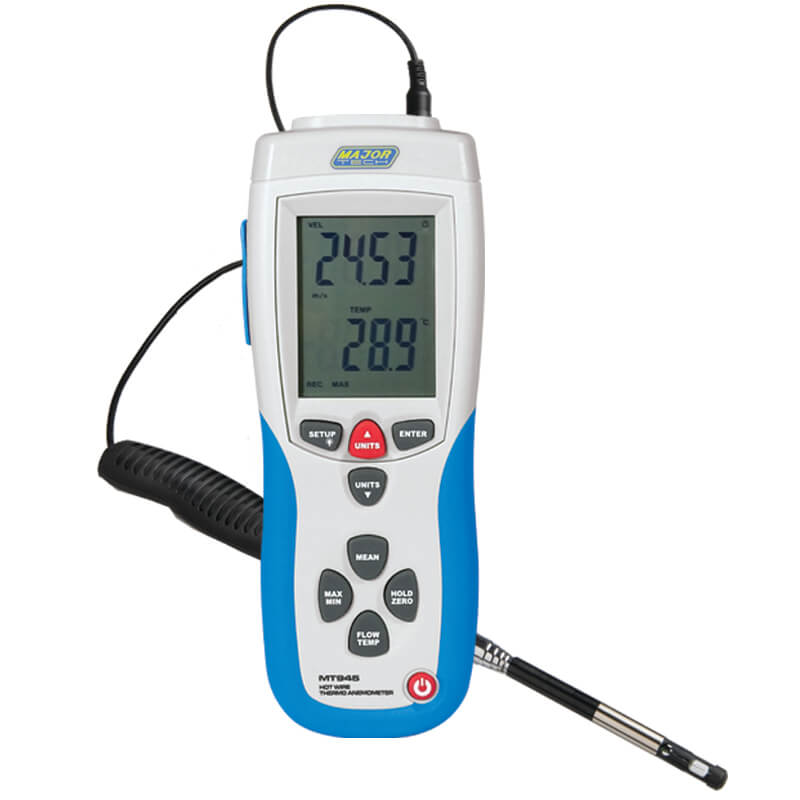How an Anemometer Can Enhance Your Weather Tracking System
How an Anemometer Can Enhance Your Weather Tracking System
Blog Article
Anemometers Unveiled: Recognizing Their Significance in Environmental Tracking and Precaution
The function of anemometers in ecological tracking and security steps is often ignored, yet their value is obvious. These tools have a long history rooted in clinical inquiry and technical innovations, progressing to end up being crucial tools in numerous areas. From meteorology to aviation safety, anemometers play a vital function in offering exact information that educates decision-making procedures and boosts total safety. Recognizing the details of anemometers introduces a world of vital understandings that are fundamental to our understanding of the atmosphere and the procedures we take to make sure safety and security.
History of Anemometers
The evolution of anemometers can be traced back to the old civilizations where rudimentary wind measuring tools were very first used. These early wind dimension devices laid the structure for the advancement of extra advanced anemometers over time. Among the earliest known anemometers was the hemispherical mug anemometer created by Leon Battista Alberti in the 15th century. This style included 4 hemispherical mugs that gathered wind energy, supplying a measurement of its intensity based upon the speed of turning.
Over the years, improvements in modern technology led to the growth of even more contemporary anemometers, including ultrasonic anemometers and laser Doppler anemometers, providing enhanced precision and efficiency in measuring wind speed and direction. The background of anemometers showcases an exceptional journey of development and progression in the field of meteorology.
Kinds Of Anemometers
Throughout the area of weather forecasting, various kinds of anemometers have been developed to properly measure wind rate and instructions. The most common kind is the mug anemometer, which includes three or 4 cups placed on horizontal arms that revolve with the wind. As the cups rotate, the rate at which they rotate is directly symmetrical to the wind speed. Another extensively made use of type is the vane anemometer, which includes a tail or fin that straightens itself with the wind direction. This placement allows the tool to establish the wind instructions. Sonic anemometers use ultrasonic signals to gauge wind speed and direction properly. They are typically made use of in study applications because of their high accuracy. Hot-wire anemometers run based on the concept that the cooling result of wind on a heated cord is proportional to the wind rate. These anemometers are appropriate for measuring low wind rates with high accuracy. Each kind of anemometer has its staminas and is picked based on the details demands of the surveillance task available.
Applications in Weather Forecasting
Having talked about the various kinds of anemometers made use of in weather forecasting for measuring wind speed and instructions, it is essential to explore their functional applications from this source in the area. Anemometers play an essential role in meteorology by supplying real-time and accurate information on wind conditions (anemometer). Meteorologists utilize anemometers to keep track of wind speed and direction to forecast climate patterns, issue cautions for severe weather events like storms, cyclones, and tornadoes, and assess climatic conditions for aeronautics safety
In meteorology, anemometers help in recognizing local and local wind patterns, which are essential for anticipating climate adjustments and figuring out climatic trends. These devices are likewise used in study to study microclimates, urban warmth islands, and air contamination dispersion. Additionally, anemometers are employed in farming to optimize plant monitoring methods, such as watering and pesticide application, based upon wind problems.
Value in Aviation Safety And Security
An essential element of guaranteeing air travel safety and security hinges on the thorough surveillance of wind conditions making use of anemometers. Anemometers play a critical role in aeronautics by supplying real-time information on wind speed and instructions, aiding pilots in Get More Information making informed choices during touchdown, liftoff, and flight. Unforeseeable and solid winds can substantially influence aircraft operations, making it necessary for aviation authorities to count on precise wind measurements to make sure the safety of guests and team.

In the dynamic setting of aeronautics, where also small adjustments in wind rate and instructions can have extensive results, anemometers stand as essential tools for promoting secure and risk-free flight.
Function in Environmental Research Study
Anemometers play a critical role in environmental study by providing important data on wind speed and direction. By accurately measuring wind qualities, anemometers help researchers evaluate the movement of contaminants in the air, evaluate the influence of commercial exhausts, and anticipate the spread of pollutants in the environment.


Conclusion
Finally, anemometers have played a vital function in environmental monitoring and security procedures. With a rich history and numerous kinds offered, these gadgets have actually been commonly utilized in meteorology, aviation safety and security, and ecological research. Comprehending the significance of anemometers is important for properly gauging wind speed and instructions, which is essential for forecasting weather patterns, ensuring safe air travel procedures, and carrying out environmental research studies - anemometer. Their contributions to these areas can not be undervalued.
One of the earliest well-known anemometers was the hemispherical cup anemometer developed by Leon Battista Alberti in the 15th century. Over the years, advancements in modern technology led to the development of more contemporary anemometers, including ultrasonic anemometers and laser Doppler anemometers, providing raised precision and effectiveness in measuring wind rate and instructions. Hot-wire anemometers operate based on the principle that the cooling result of wind on a heated cord is proportional to the wind speed. Meteorologists make use of anemometers to keep an eye on wind rate and direction to forecast climate patterns, issue warnings for extreme climate events like cyclones, tornadoes, and tornados, and analyze atmospheric conditions for air travel security.
Understanding the importance of anemometers is important for precisely determining wind speed and instructions, which is crucial for forecasting climate patterns, ensuring risk-free aeronautics procedures, and performing ecological researches. (anemometer)
Report this page